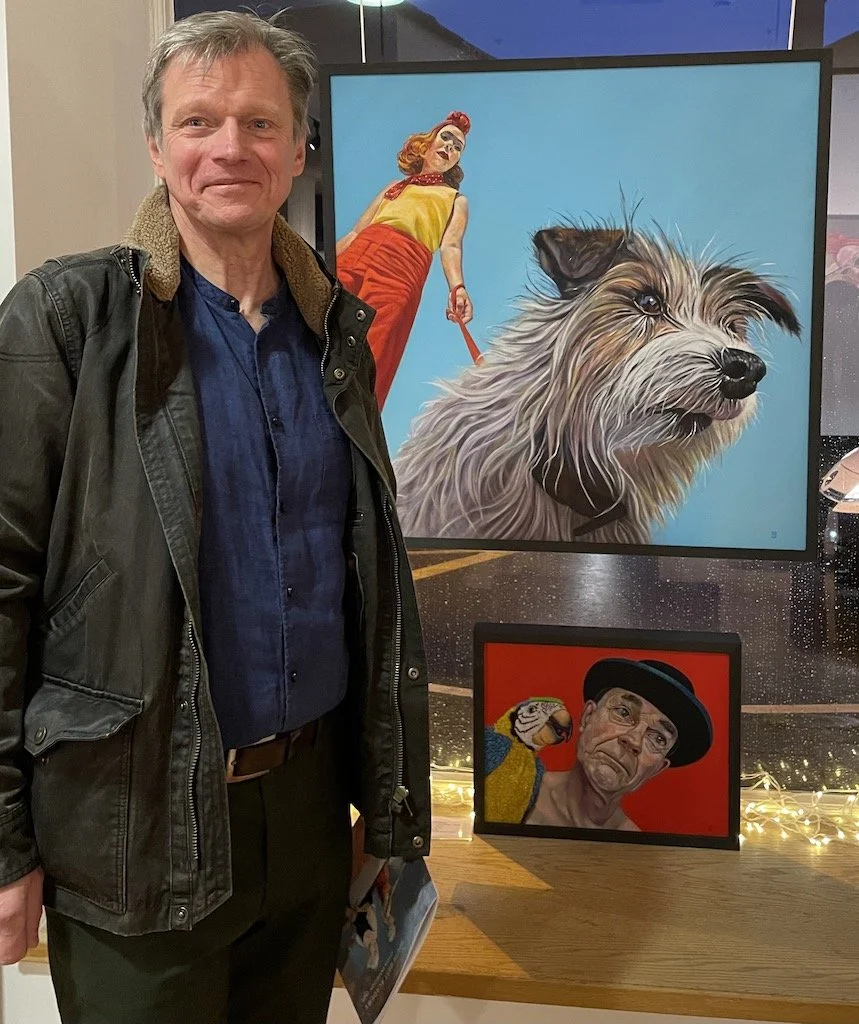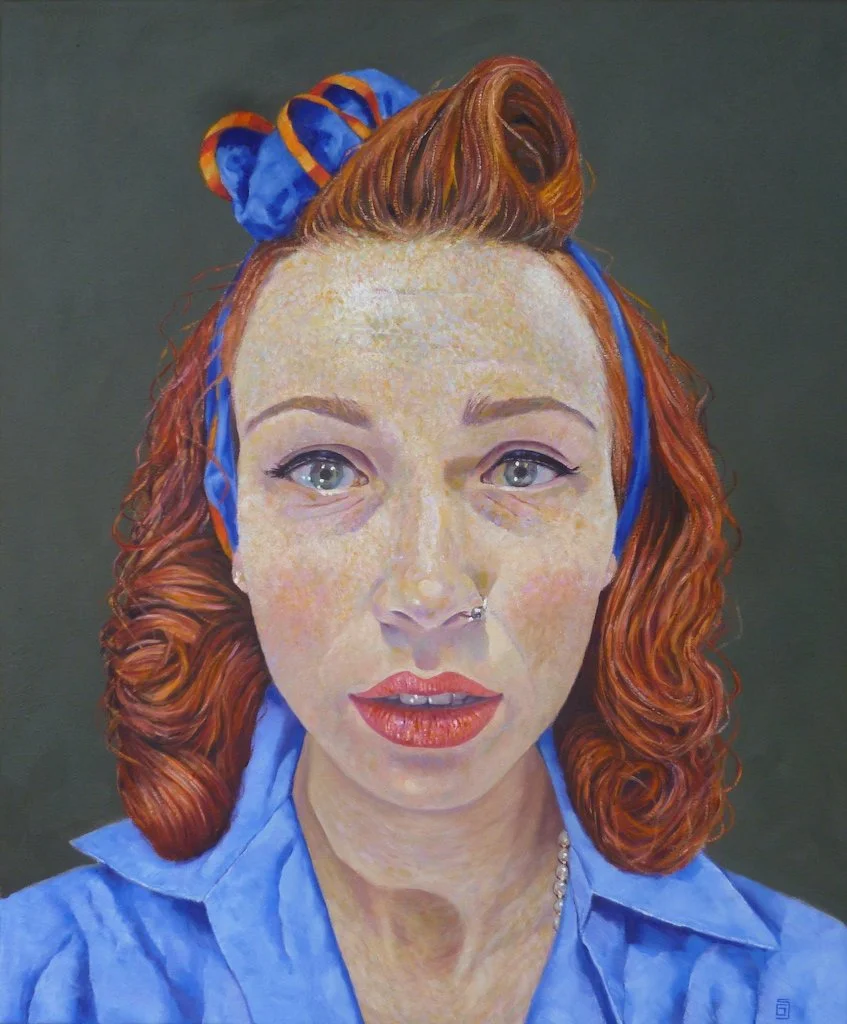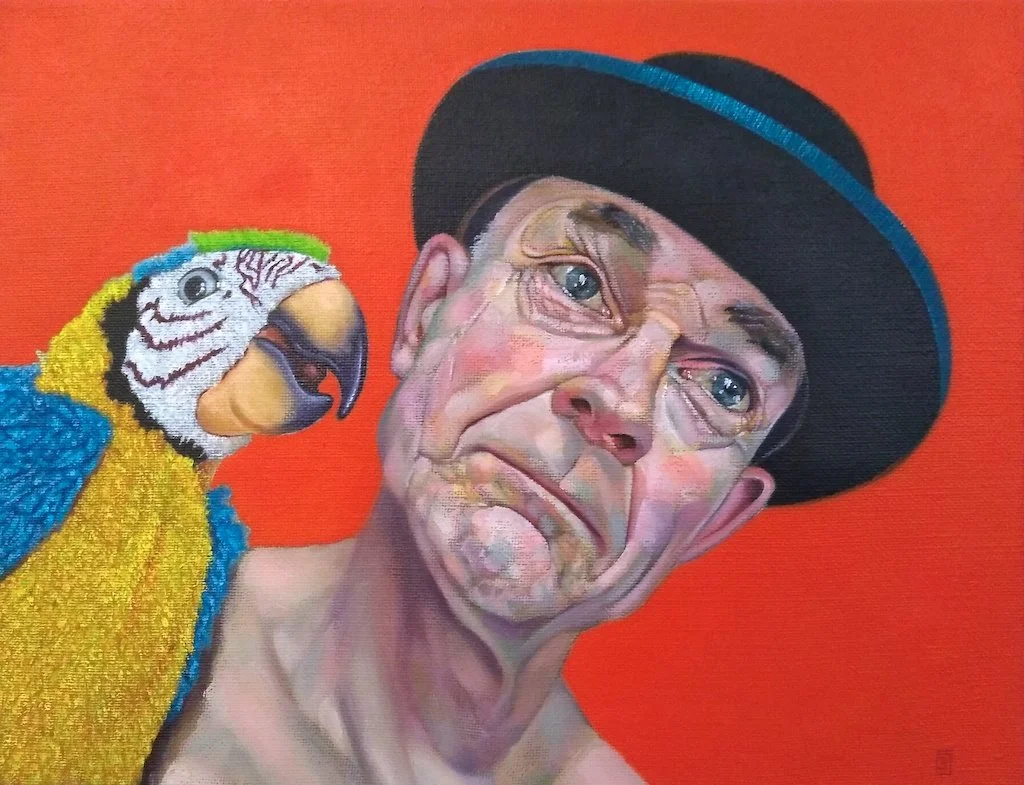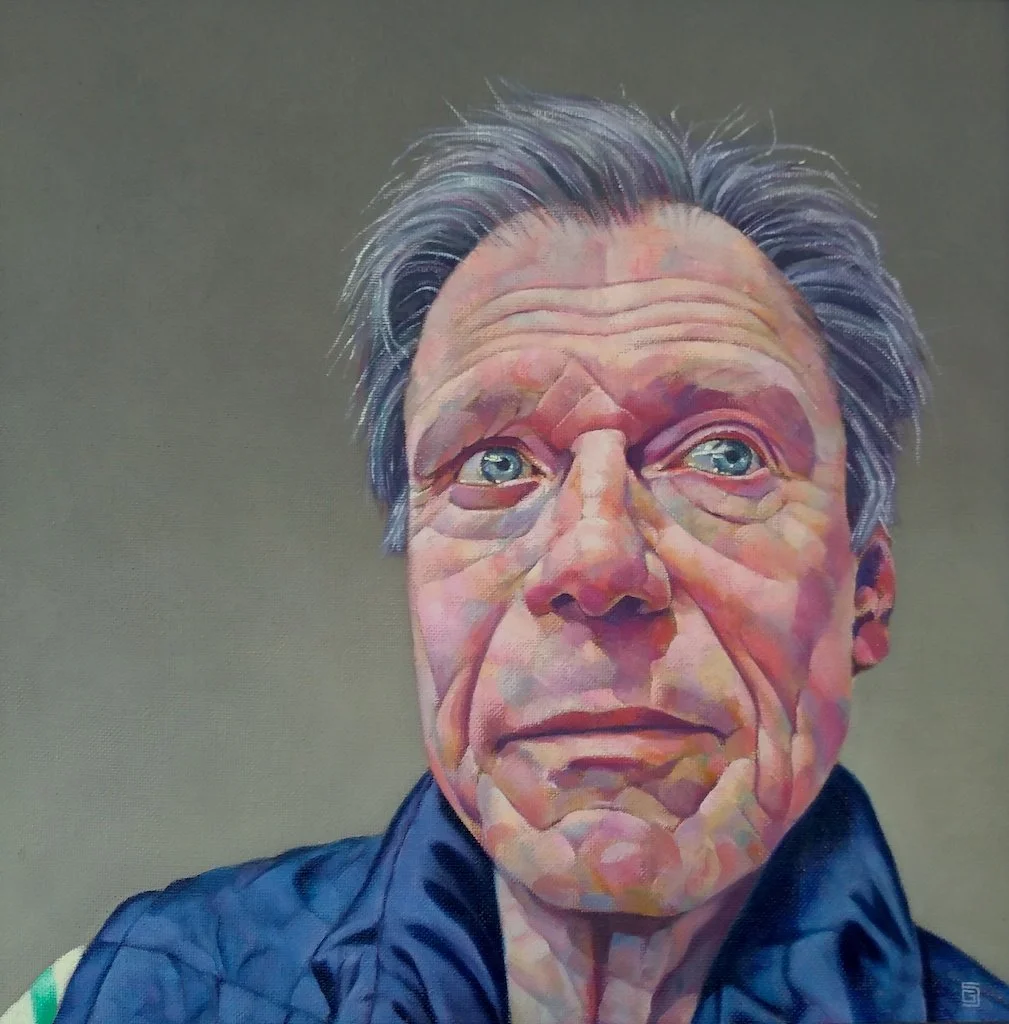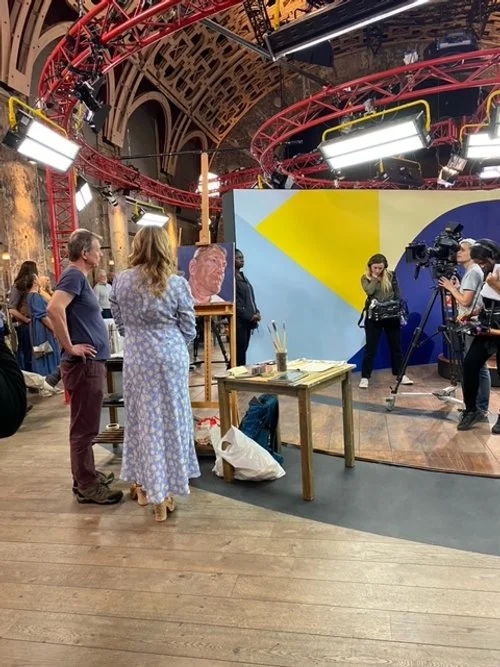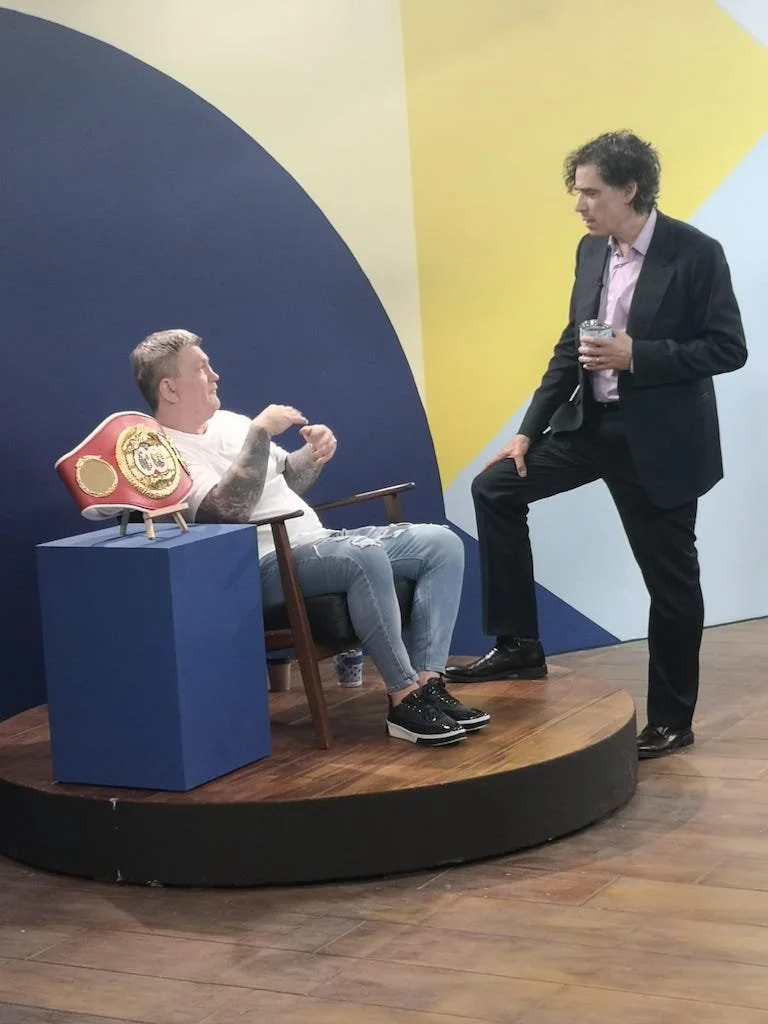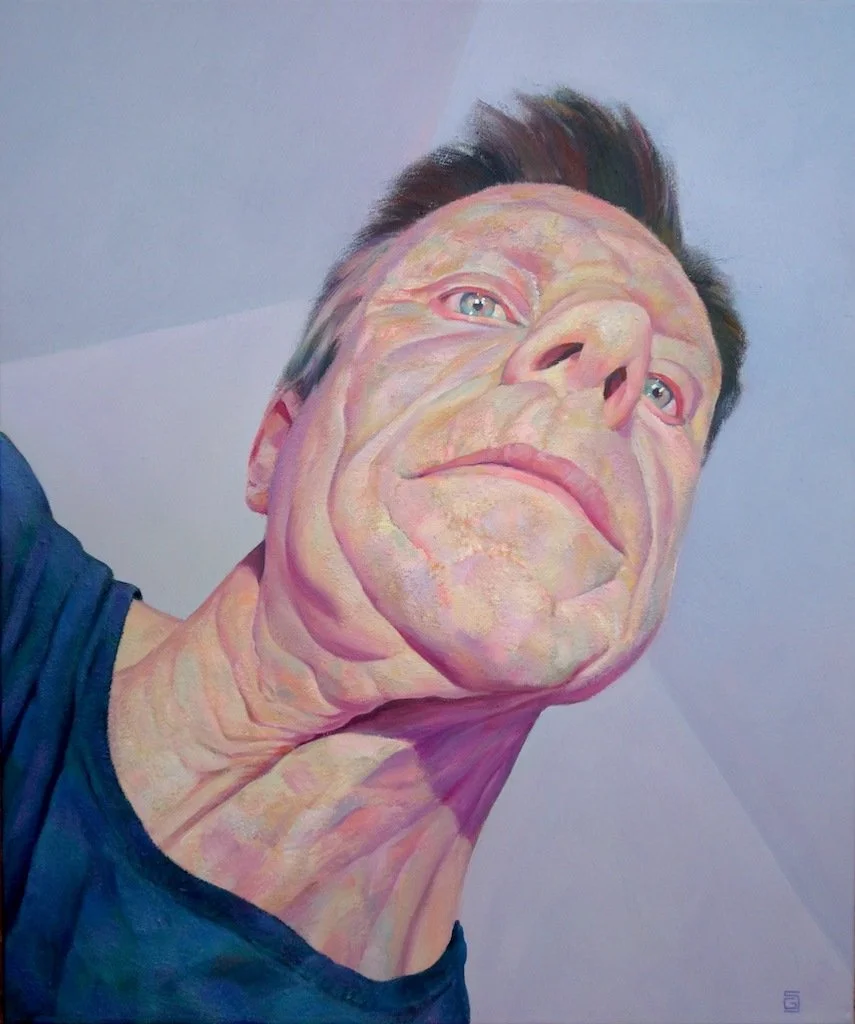ARTIST INTERVIEW: GEOFF SHILLITO
Geoff Shillito
Please introduce yourself. What ignited your passion for art? How have you turned your passion for art into a career?
My name is Geoff Shillito and I live in Somerset in South West England. In 2005, I was elected a member of the Bath Society of Artists, and in 2020 I was elected an Academician (and have since become a Trustee) of the South West Academy of Fine and Applied Arts.
I started my working life as a chef, but after seven years I became disenchanted and decided to go back to college and retrain as a Graphic Designer and Advertising Art Director. Throughout this time I maintained my deep interest in Fine Art and in 2001, after over twenty years in the design and advertising industry, decided to make a radical shift and took a ‘day job’ in the Civil Service where the hours were less demanding, and, more importantly, where I could devote all my spare time to painting, working every evening and weekends. Throughout this time, I gradually reinvented myself, and in 2020 became a full-time Fine Artist working from my studio at home.
And the sky, was it ever so blue? (after McGough)
Thinking about your narrative series of works, what is your main source of inspiration? How does the composition reflect the narrative?
I am in the process of painting an ongoing series of narrative works. Apart from the compositional elements, there is no theme linking them. I paint what interests me at the time. The subjects can be humorous, (‘Barry Discovers the Chocolate Fudge Sundae’ – based on a former neighbour’s cat who loved all things dairy, ‘Identity Parade’, and ‘Walking The Dog’); melancholic, (‘And the sky, was it ever so blue? - after McGough’ – an epilogue to the poem ‘My Bus Conductor’ by Roger McGough); dark (‘The Scarecrow’), or mysterious (The Girl on The Beach’).
The Girl on The Beach
How has your fascination with film been influential to your work?
Whether I am painting narrative subjects, portraits, or still life paintings, they have gradually developed, over the years, various compositional elements such as the intimate view, dynamic angles, tight cropping and conflicts of scale which, either by design or accident, have crept into my paintings. These elements partly originate from my life-long interest in Cinema and reportage photography.
In your figurative work, the subject is often close-up, with very little background. Why is this? Why do you find the human face fascinating to paint?
I am a great admirer of many figurative painters, notably Lucian Freud, Rembrandt, Jenny Saville, Stanley Spencer and Tai-shan Schierenberg to name but a few. Throughout one’s life one earns every line and crevice on one’s face. To that end the intensity of the close-up offers endless fascination for me. Consequently, I have often (but not always), painted portraits of my sitters on a monumental scale. The subject is all-important to me, and more often than not, I remove or diminish any distracting background elements to allow the painting to gather further energy influencing the viewer to concentrate solely on the sitter’s features.
Girl in a Blue Dress
Out of all your sitters, who has been your favourite to paint, and why?
That’s a very difficult question, as all my sitters hold a particular interest. However, one of my models, Aloisia (Lois) Williams remains a firm favourite. Lois is a graduate of the London School of Fashion whom I met about ten years ago and who has appeared in several of my paintings (‘Girl in a Green Dress’, ‘Girl in a Green Hat’, ‘Girl in a Blue Dress’, ‘Walking The Dog’, and ‘The Girl on The Beach’). Due to her professional background, Lois has a wonderful sense of style with a particular interest in retro fashion and make-up.
Walking the Dog
What initially inspired your most recent painting? Describe your creative process from start to finish.
Encountering one’s doppelgänger is a rare enough occurrence, so I wanted an unusual circumstance whereby five of them would all meet, hence the identity parade line-up! This group of suspects is metaphorically and literally a snapshot showing the wealthiest to the poorest in society. The message being that, ‘under the skin we are all the same’.
Despite its apparently simple depiction, this painting was extremely complex in its construction. As is not the usual case in my work, the background (wall, measurements and shadows) came first, followed by each of the figures.
Identity Parade
What is your favourite part of your process, and why?
From blank canvas to finished piece, every painting has its challenges and hopefully eventual triumphs. One can often find oneself in a metaphorical pit and part of the enjoyment is digging oneself out.
To be honest, I enjoy every part of the painting process, but it is very satisfying to see one’s work framed up and on a gallery wall, particularly when it’s accompanied with a red dot!
Was it something I said?
In 2024, you took part in Sky Arts Portrait Artist of The Year. Describe your experience on the show. Did you find it challenging completing a painting within 4 hours?
This year, there were over 1400 entries from which seventy-two were selected, myself included, to appear in the series. All artists are required to submit a self-portrait to be considered, so I submitted ‘Self Portrait in Blue Gilet’. When I received notification that I was to appear on the programme, I had already created a strategy on how I was going to produce even a half-decent portrait in only four hours. I created four ‘dummy run’ paintings, timed them to exactly four hours, and the results were positive enough for me to feel confident.
Self Portrait in Blue Gilet
The day of my heat was very long. There were nine artists appearing with over two hundred people standing behind us watching intently. At first this seemed quite intimidating, but one had to just focus and concentrate on the task ahead. My subject for the day was welterweight and light welterweight world champion, Ricky Hatton.
Ricky Hatton
Throughout the painting process, there were endless interruptions where the judges and compere, Stephen Mangan, conducted brief interviews. Cameras too and film crews were a constant distraction which made the process even more challenging.
As I said earlier, I have always admired the work of Tai-shan Schierenberg, and so it was a great pleasure to meet him in person and to talk at some length about painting and the painting process.
Despite being eliminated in this first round, I had a thoroughly enjoyable, rewarding and unforgettable experience, and I would encourage any artist to enter.
What are your future aspirations as an artist? How do you envision your work developing this year?
I paint anything that interests or inspires me, and I do it to the best of my ability. We release only our best work; no-one ever sees the failures and rejects. But these too are important in our development as artists. Only by failing can one gradually move forward. It can sometimes be a long and lonely path but ultimately one improves, and the rewards are beyond measure.
Why do you think art is important in society?
For me, painting is the ultimate expression of the human spirit, and we ignore or abandon art at our peril. It is the vocabulary upon which our civilisation communicates, and we would be deeply impoverished without it.


